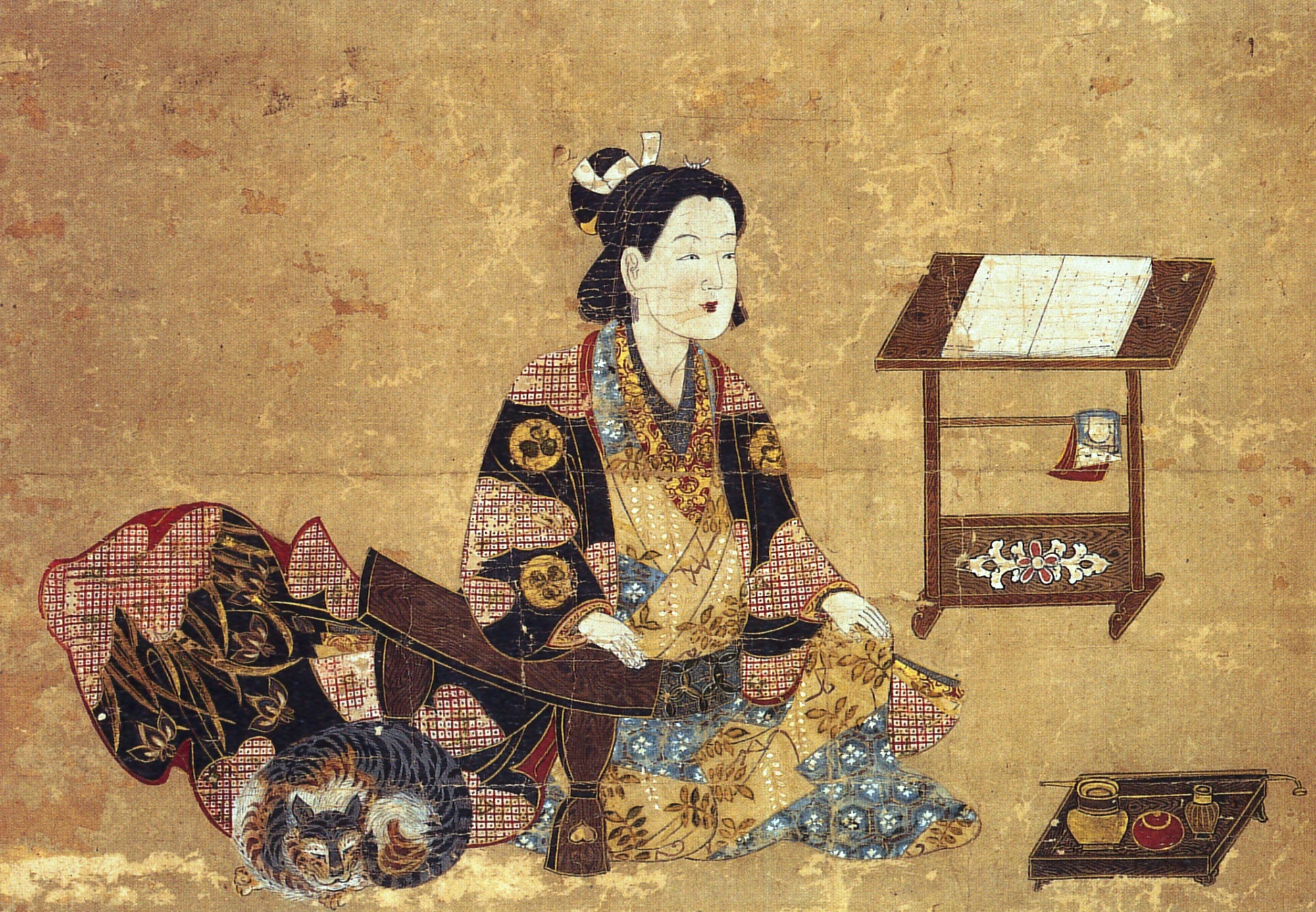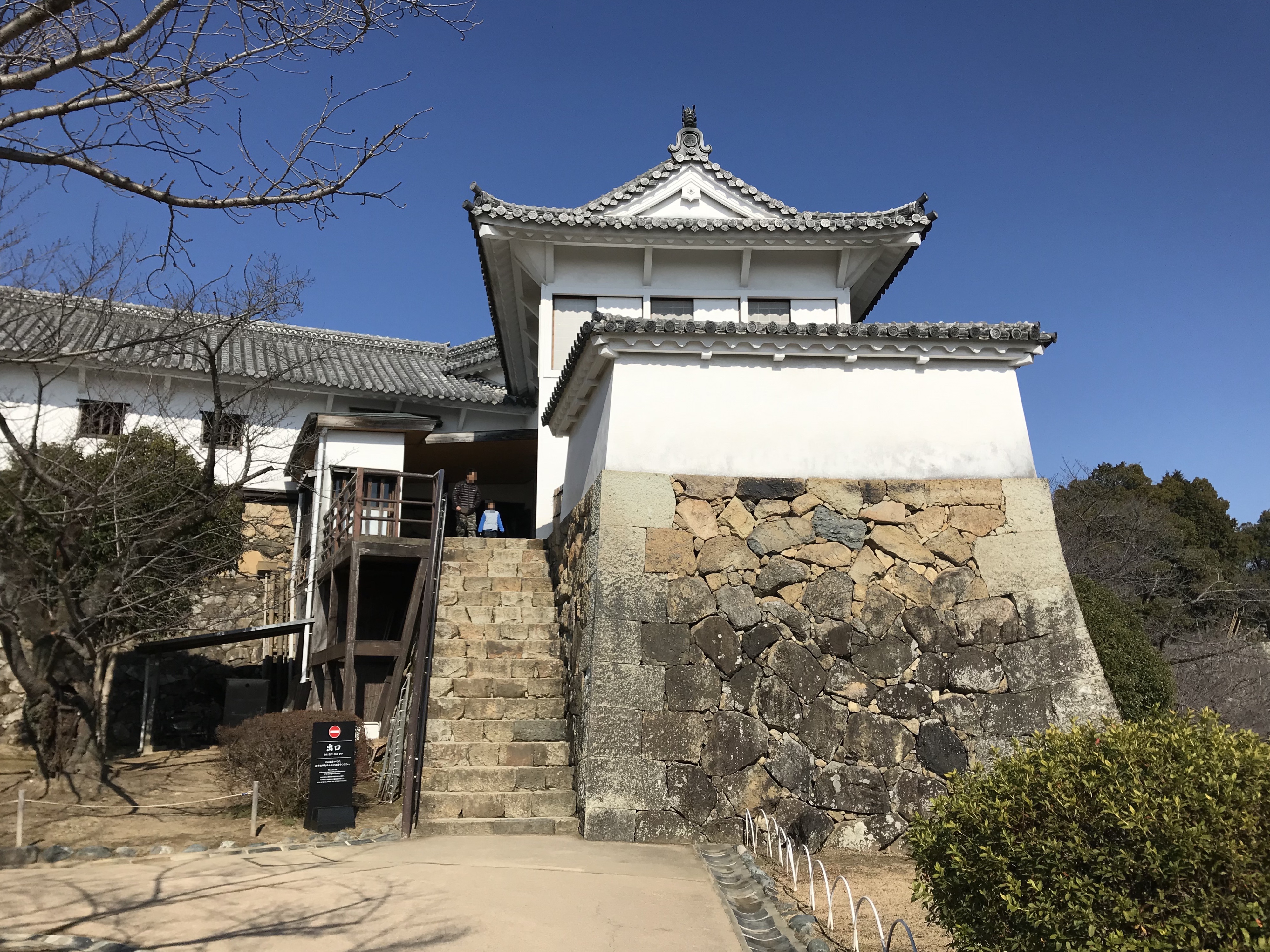Senhime on:
[Wikipedia]
[Google]
[Amazon]
 , or Lady Sen, was the eldest daughter of the ''
, or Lady Sen, was the eldest daughter of the ''
 In 1616, Ieyasu remarried Senhime to Honda Tadatoki, a grandson of Honda Tadakatsu, and in few years she moved to
In 1616, Ieyasu remarried Senhime to Honda Tadatoki, a grandson of Honda Tadakatsu, and in few years she moved to

 The dramatic life of Senhime produced many legends. Some legends talk about her tenderness, such as how she saved a daughter of her husband Hideyori and another wife of him at the Siege of Osaka. Some other tell her lecherousness during her later days at Edo. Today, Senhime figures prominently in ''
The dramatic life of Senhime produced many legends. Some legends talk about her tenderness, such as how she saved a daughter of her husband Hideyori and another wife of him at the Siege of Osaka. Some other tell her lecherousness during her later days at Edo. Today, Senhime figures prominently in ''
 , or Lady Sen, was the eldest daughter of the ''
, or Lady Sen, was the eldest daughter of the ''shōgun
, officially , was the title of the military rulers of Japan during most of the period spanning from 1185 to 1868. Nominally appointed by the Emperor, shoguns were usually the de facto rulers of the country, except during parts of the Kamak ...
'' Tokugawa Hidetada and later the wife of Toyotomi Hideyori. She was remarried to Honda Tadatoki after the death of her first husband. Following the death of her second husband, she later became a Buddhist
Buddhism, also known as Buddhadharma and Dharmavinaya, is an Indian religion and List of philosophies, philosophical tradition based on Pre-sectarian Buddhism, teachings attributed to the Buddha, a wandering teacher who lived in the 6th or ...
nun under the name of .
Biography
Early life
She was born in 1597 as the eldest daughter of the then-daimyo
were powerful Japanese magnates, feudal lords who, from the 10th century to the early Meiji period in the middle 19th century, ruled most of Japan from their vast hereditary land holdings. They were subordinate to the shogun and nominally to ...
and later ''shōgun
, officially , was the title of the military rulers of Japan during most of the period spanning from 1185 to 1868. Nominally appointed by the Emperor, shoguns were usually the de facto rulers of the country, except during parts of the Kamak ...
'' Tokugawa Hidetada and his wife Oeyo
, , or : 1573 – September 15, 1626) was a noblewoman in Japan's Azuchi–Momoyama period and early Edo period. She was a daughter of Oichi and the sister of Yodo-dono and Ohatsu. When she rose to higher political status during the Tokugawa s ...
during the Warring-States period of Japanese history. Her paternal grandfather was the founder of the Tokugawa shogunate
The Tokugawa shogunate, also known as the was the military government of Japan during the Edo period from 1603 to 1868.
The Tokugawa shogunate was established by Tokugawa Ieyasu after victory at the Battle of Sekigahara, ending the civil wars ...
, Tokugawa Ieyasu
Tokugawa Ieyasu (born Matsudaira Takechiyo; 31 January 1543 – 1 June 1616) was the founder and first ''shōgun'' of the Tokugawa shogunate of Japan, which ruled from 1603 until the Meiji Restoration in 1868. He was the third of the three "Gr ...
; her maternal grandfather was Azai Nagamasa; her grandmother was Oichi
was a female historical figure in the late Sengoku period. She is known primarily as the mother of three daughters who became prominent figures in their own right – Yodo-dono, Ohatsu
, whose brother was Oda Nobunaga
was a Japanese ''daimyō'' and one of the leading figures of the Sengoku period, Sengoku and Azuchi-Momoyama periods. He was the and regarded as the first "Great Unifier" of Japan. He is sometimes referred as the "Demon Daimyō" and "Demo ...
. When she was six or seven, her grandfather wanted her to marry Toyotomi Hideyori, who was the son of Toyotomi Hideyoshi
, otherwise known as and , was a Japanese samurai and ''daimyō'' (feudal lord) of the late Sengoku period, Sengoku and Azuchi-Momoyama periods and regarded as the second "Great Unifier" of Japan.Richard Holmes, The World Atlas of Warfare: ...
.
In 1603, when Senhime was seven years old, she married the successor to the Toyotomi clan, Toyotomi Hideyori and lived with him in Osaka Castle
is a Japanese castle in Chūō-ku, Osaka, Chūō-ku, Osaka, Japan. The castle is one of Japan's most famous landmarks and played a major role in the unification of Japan during the sixteenth century of the Azuchi–Momoyama period.
Layout
Th ...
along with his mother, Lady Yodo, who was a sister of Oeyo
, , or : 1573 – September 15, 1626) was a noblewoman in Japan's Azuchi–Momoyama period and early Edo period. She was a daughter of Oichi and the sister of Yodo-dono and Ohatsu. When she rose to higher political status during the Tokugawa s ...
, Senhime's mother and accompanied by her wet-nurse, . The marital relationship was recorded as good, but unfortunately, they were unable to have children. Her grandfather Tokugawa Ieyasu
Tokugawa Ieyasu (born Matsudaira Takechiyo; 31 January 1543 – 1 June 1616) was the founder and first ''shōgun'' of the Tokugawa shogunate of Japan, which ruled from 1603 until the Meiji Restoration in 1868. He was the third of the three "Gr ...
, besieged the castle in 1615, when she was nineteen. When Osaka castle fell, Hideyori committed ritual suicide beside his mother
A mother is the female parent of a child. A woman may be considered a mother by virtue of having given birth, by raising a child who may or may not be her biological offspring, or by supplying her ovum for fertilisation in the case of ges ...
, his son was executed at the age of 7 years old. Senhime was rescued from the castle before it fell. Senhime also saved Hideyori's daughter with another woman, Tenshuni, and later adopted her.
Tadatoki's wife
 In 1616, Ieyasu remarried Senhime to Honda Tadatoki, a grandson of Honda Tadakatsu, and in few years she moved to
In 1616, Ieyasu remarried Senhime to Honda Tadatoki, a grandson of Honda Tadakatsu, and in few years she moved to Himeji
260px, Himeji City Hall
is a city located in Hyōgo Prefecture in the Kansai region of Japan. , the city had an estimated population of 525,682 in 227,099 households and a population density of 980 persons per km2. The total area of the city is ...
. Honda Tadatoki's mother, Kumahime, was the daughter of Matsudaira Nobuyasu and hence a granddaughter of Ieyasu.
A famous legend tells that a certain Sakazaki Naomori planned to capture Senhime just before her remarriage, wishing to marry her himself. However his plan was revealed and Naomori was either killed or forced to commit suicide. It was long believed that Naomori was the one who saved Senhime out from the Osaka Castle, believing the words of Tokugawa Ieyasu that he would give Senhime to whoever rescued her, though recently this has been doubted. Stories tell that Senhime refused to marry Naomori, whose face was ill-favored because of the burn he got when he saved her, and rather preferred handsome Tadatoki.
Senhime and Tadatoki had an amicable marriage and had two children together: a daughter, , and a son, . However tragedy struck when her son died at the age of three, and five years later in 1626, her husband died of tuberculosis
Tuberculosis (TB), also known colloquially as the "white death", or historically as consumption, is a contagious disease usually caused by ''Mycobacterium tuberculosis'' (MTB) bacteria. Tuberculosis generally affects the lungs, but it can al ...
. Her mother, Oeyo (then known as Sūgen'in) died in the same year. As was the tradition for a widow at that time, Senhime cut her hair short and became a Buddhist
Buddhism, also known as Buddhadharma and Dharmavinaya, is an Indian religion and List of philosophies, philosophical tradition based on Pre-sectarian Buddhism, teachings attributed to the Buddha, a wandering teacher who lived in the 6th or ...
nun, taking the name , moved back to Edo and spent the rest of her life there. After Tokugawa Ietsuna's adoptive mother, Oman no Kata (known as ) died, Tenjuin become Ietsuna's adoptive mother.
Family
* Father: Tokugawa Hidetada (1581-1632) * Mother:Oeyo
, , or : 1573 – September 15, 1626) was a noblewoman in Japan's Azuchi–Momoyama period and early Edo period. She was a daughter of Oichi and the sister of Yodo-dono and Ohatsu. When she rose to higher political status during the Tokugawa s ...
(1573-1626)
* Husbands:
** Toyotomi Hideyori (1593-1615)
** Honda Tadatoki (1596-1626)
* Children:
** Katsuhime (b. 1618) married Ikeda Mitsumasa
** Kochiyo (1619–1621)
Impact on culture

 The dramatic life of Senhime produced many legends. Some legends talk about her tenderness, such as how she saved a daughter of her husband Hideyori and another wife of him at the Siege of Osaka. Some other tell her lecherousness during her later days at Edo. Today, Senhime figures prominently in ''
The dramatic life of Senhime produced many legends. Some legends talk about her tenderness, such as how she saved a daughter of her husband Hideyori and another wife of him at the Siege of Osaka. Some other tell her lecherousness during her later days at Edo. Today, Senhime figures prominently in ''jidaigeki
is a genre of film, television, and theatre in Japan. Literally meaning "historical drama, period dramas", it refers to stories that take place before the Meiji Restoration of 1868.
''Jidaigeki'' show the lives of the samurai, farmers, crafts ...
'' and '' taiga dorama'' ( period dramas) in Japan.
Senhime is also a beloved figure in Himeji. Shortly after her marriage to Honda Tadatoki, they moved to Himeji Castle, a present-day world heritage site whose west wing was mostly constructed at that time. Most of the west wing is lost now, but a tower called ''keshō yagura'' (Dressing Tower) remains, where it is believed that her dressing chambers were.
Senhime appeared in the concluding storyline of the semi-fictional video game '' Kessen''. In the final cutscene
A cutscene or event scene (sometimes in-game cinematic or in-game movie) is a sequence in a video game that is not interactive, interrupting the gameplay. Such scenes are used to show conversations between characters, set the mood, reward the ...
she laments to Ieyasu about the tragedy of war and the death of Hideyori, Ieyasu comforts her and replies that the people of Japan will once again live in peace and praises Hideyori for his duty as a samurai by committing seppuku
, also known as , is a form of Japanese ritualistic suicide by disembowelment. It was originally reserved for samurai in their code of honor, but was also practiced by other Japanese people during the Shōwa era (particularly officers near ...
.
Senhime also appeared in a 1962 movie '' Senhime to Hideyori'', starring Hibari Misora as Senhime. The film begins from the siege and fall of Osaka castle and tells the fictionalized story of Senhime's later years after the death of Hideyori till her final confinement to the Buddhist temple. A more historical film about Senhime and the siege of Osaka Castle appeared in the mid-1950s entitled ''Princess Senhime'', with Machiko Kyō in the title role.
Senhime appears in the 1955 historical novel '' Yodo-dono nikki'' by Yasushi Inoue.
Literature
*Family tree
Notes
References
External links
{{Authority control Japanese nobility 1597 births 1666 deaths 17th-century Japanese women Honda clan Tokugawa clan Toyotomi clan People of the Azuchi–Momoyama period People of the Edo period Women of the Sengoku period 17th-century Japanese people Japanese Buddhist nuns 17th-century Buddhist nuns